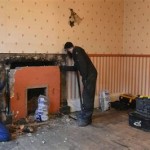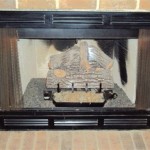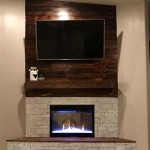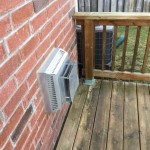Cost to Install a Natural Gas Fireplace Insert: A Comprehensive Guide
Installing a natural gas fireplace insert is a significant home improvement project that can enhance the ambiance of a living space, provide supplemental heating, and potentially increase property value. However, understanding the associated costs is crucial before embarking on such an undertaking. This article provides a detailed breakdown of the factors influencing the overall cost to install a natural gas fireplace insert, offering a comprehensive guide for homeowners considering this upgrade.
The total cost of installation can vary considerably depending on several factors, including the type of insert chosen, the complexity of the installation process, the existing fireplace condition, and regional labor rates. Generally, homeowners can expect to spend anywhere from $3,000 to $8,000 or more for a complete natural gas fireplace insert installation. This range encompasses the price of the insert itself, necessary materials, and professional labor costs.
Factors Influencing the Cost of the Natural Gas Fireplace Insert
The price of the natural gas fireplace insert itself is a major determinant of the overall project cost. Inserts vary widely in price depending on their size, features, BTU output, brand, and aesthetic design. Basic models with lower BTU ratings are typically at the lower end of the price spectrum, while high-end models with advanced features like remote control, variable flame height, and ceramic glass fronts can significantly increase the cost.
BTU, or British Thermal Units, is a measure of the heat output of the fireplace insert. A higher BTU rating indicates a greater heating capacity. The appropriate BTU rating for a particular home will depend on the size of the room to be heated and the homeowner's desired level of supplemental heat. Choosing an insert with an inadequate BTU rating will result in insufficient heating, while an excessively high rating might lead to overheating and wasted energy. Consulting with a professional installer or fireplace retailer can help determine the optimal BTU rating for a specific application.
Aesthetic design elements also contribute to the price of the insert. Features such as realistic log sets, decorative fronts, and various finishing options can increase the cost. Homeowners should consider their aesthetic preferences and the existing decor of the room when selecting an insert to ensure it complements the overall style of the home.
The brand of the natural gas fireplace insert also plays a role in pricing. Established and reputable brands often command a premium due to their quality, reliability, and warranty offerings. While less expensive, lesser-known brands might present an attractive initial cost savings, but it is essential to research their reliability and availability of replacement parts before making a decision.
Installation Costs Associated with Natural Gas Fireplace Inserts
Beyond the cost of the insert itself, the installation process accounts for a significant portion of the overall expense. Installation involves several steps, each with associated labor and material costs. These steps typically include preparing the existing fireplace, running a gas line, installing a chimney liner, and connecting the insert to the gas supply and venting system.
Preparing the existing fireplace often involves cleaning and inspecting the firebox and chimney. If the existing fireplace is in poor condition or requires repairs, this can add to the overall cost. For example, if the firebox has cracks or crumbling brickwork, it may need to be repaired or rebuilt before the insert can be installed. Similarly, the chimney might require cleaning or repairs to ensure proper venting.
Running a gas line to the fireplace insert is a crucial step that must be performed by a qualified plumber or gas fitter. The cost of this task depends on the distance from the existing gas supply line to the fireplace, the complexity of the plumbing work, and local permitting requirements. If the gas line needs to be run through walls, floors, or ceilings, this will increase the labor and material costs. Furthermore, compliance with local building codes and safety regulations is paramount when installing a gas line to prevent leaks and ensure safe operation.
Installing a chimney liner is often necessary to ensure proper venting of the combustion gases produced by the natural gas fireplace insert. A chimney liner is a metal pipe or tube that is inserted into the existing chimney to protect it from corrosion and provide a safe and efficient venting pathway. The cost of a chimney liner depends on its material (stainless steel is a common choice), diameter, and length. In some cases, the existing chimney may not be suitable for a liner, necessitating more extensive chimney modifications, which can significantly increase the installation cost.
Connecting the insert to the gas supply and venting system is another critical step that requires expertise and adherence to safety regulations. This involves connecting the gas line to the insert's gas valve and connecting the venting system to the chimney liner. Proper sealing and testing are essential to prevent gas leaks and ensure safe and efficient operation. Many installers also include a carbon monoxide detector as part of the installation to provide an additional layer of safety.
Additional Costs to Consider
Beyond the core components of the insert and its installation, several miscellaneous costs can impact the overall project budget. These costs might include permits, electrical work, finishing work, and ongoing maintenance.
Permits are typically required for natural gas fireplace insert installations to ensure compliance with local building codes and safety regulations. The cost of permits varies depending on the jurisdiction, but it is essential to factor this into the overall budget. Obtaining the necessary permits can help avoid potential fines and ensure that the installation meets all applicable safety standards.
Electrical work may be necessary to connect the fireplace insert to a power outlet. Some inserts require electricity to operate features such as blowers, remote controls, and ignition systems. If there is no existing electrical outlet near the fireplace, an electrician will need to install one, adding to the project cost. The complexity of the electrical work and the electrician's hourly rate will determine the overall expense.
Finishing work may also be desired to improve the aesthetic appeal of the fireplace insert installation. This might include installing a decorative surround, adding a hearth extension, or painting or refinishing the surrounding wall. These finishing touches can enhance the overall appearance of the fireplace and integrate it seamlessly into the room's decor. The cost of finishing work depends on the materials chosen and the complexity of the tasks involved.
Ongoing maintenance is another cost to consider. Natural gas fireplace inserts require periodic cleaning and inspection to ensure safe and efficient operation. This might involve cleaning the glass front, inspecting the venting system, and checking the gas connections. It is recommended to have the insert professionally serviced annually to identify and address any potential issues before they become major problems. The cost of annual maintenance can vary depending on the service provider and the scope of the maintenance tasks performed.
Homeowners should obtain quotes from multiple qualified installers and compare their prices and services. Requesting detailed written estimates that break down the costs of the insert, materials, labor, and any additional fees is advisable. Checking the installer's credentials, insurance coverage, and customer reviews is also crucial to ensure they are reputable and reliable.
Furthermore, inquiring about any potential rebates or incentives offered by local utility companies or government agencies can help reduce the overall cost of the installation. Some programs offer rebates for energy-efficient appliances such as natural gas fireplace inserts. These rebates can help offset the initial investment and make the project more affordable.
Careful planning and budgeting are essential for a successful natural gas fireplace insert installation. By understanding the various factors that influence the cost and obtaining multiple quotes from qualified installers, homeowners can make informed decisions and ensure that the project stays within budget.
Ultimately, the cost to install a natural gas fireplace insert is a multifaceted calculation influenced by a variety of elements. Evaluating these aspects is crucial for homeowners aiming to make a well-informed decision and ensure a satisfactory and cost-effective installation.

How Much Does A Gas Fireplace Cost Fireplaces Direct Learning Center

How Much Does A Gas Fireplace Insert Cost Forbes Home

How Much Does It Cost To Install A Gas Fireplace Homeserve Usa

Gas Fireplace Cost Guide Unit Add Ons Installation More

How Much Does A Gas Fireplace Insert Cost To Install 2024

Estimated Page Fireplaces Stoves Inserts Wood Gas Pellet

Gas Fireplace Installation Cost Dbs Inc

Estimated Page Fireplaces Stoves Inserts Wood Gas Pellet

Fireplace Installation Cost 2024 Gas Wood Burning Electric

Gas Fireplace Inserts Pros And Cons Of Ventless Fireplaces








